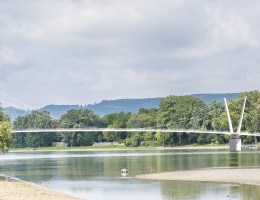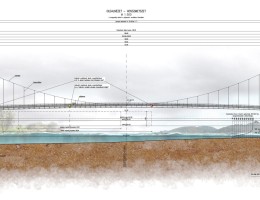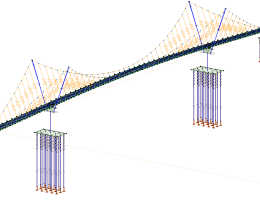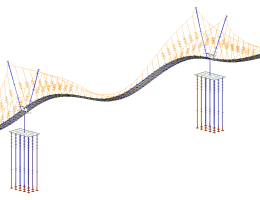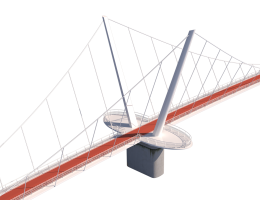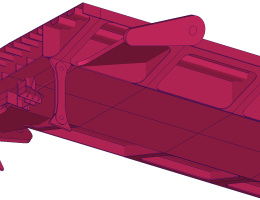CUSTOMER PROJECTS
BICYCLE DANUBE BRIDGE ABOVE THE SZENTENDRE DANUBE BRANCH
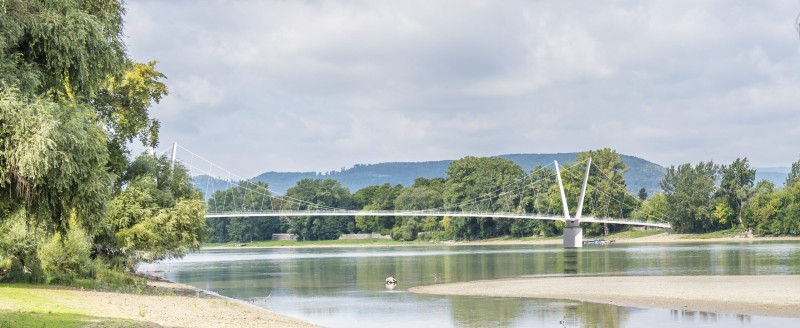
BUDAPEST, HUNGARY
STRUCTURAL ANALYSIS:
BRIDGE DESIGNER:
YEAR OF CONSTRUCTION:
Dr. Gábor Lengyel and Klaudia Bordás
Gábor Pál
2022
PROJECT DESCRIPTION
DESIGN OF HUNGARY’S FIRST BICYCLE DANUBE BRIDGE ABOVE THE SZENTENDRE DANUBE BRANCH
Based on the construction plans of SPECIÁLTERV Kft., Hungary’s first bicycle bridge on the Danube branch may come to a reality, which can also be the country’s first self-anchored suspension bridge. The bridge connects the towns of Kisoroszi and Dunabogdány on the Szentendrei Danube-branch, which is also a crucial element on the internationally relevant Eurovelo 6 cycle network. The pylon and the the main support gives the structure a natural appearance with a minimized, aesthetic design. Loads from the bridge track are carried by two control cables suspended on a steel V-shaped pylon.
Link: DANUBE BRIDGE AT KISOROSZI — Speciálterv
SUPPORT STRUCTURE
After analyzing the variants, a self-anchored suspension bridge type was selected. The bridge seemingly identical in appearance to a classic suspension bridge, however, the design has many advantages. The most important thing is that it is possible to eliminate the anchoring block, reducing costs and substructural elements, while causing less environmental disturbance. The inclined cable plane due to the inclination of the sideways tilted pilons used is significantly increases the horizontal stiffness of the superstructure.
The support distribution of the bridge is 60+160+60m=280m. Its pylon is only 27 m above the road, thus its height barely rises above the crown level of the surrounding coastal trees. For pedestrian and cyclist bridges of this scale, the need to stiffen the slender deck and its dynamic detuning is a challenge. Dynamic effects are also significant in such soft slender structures, which are modeled in flow theory analysis.
EXECUTIVE DESIGN WITH THE AXISVM PROGRAM
AXISVM proved to be very useful during the detailed examinations of the bridge. Supported by the COM server technology, the global finite element model could be designed with great detail and flexibility.
The orthotropic track girder in the temporary installation states, and the construction stages between support movement sequences were carried out in AXISVM.
Examination of the final state was carried out on a linearized model, but taking into account the geometric stiffness
with the help of a detailed spatial shell model in the software. Nonlinear link elements were used for the modeling of connection elements, and for the modeling of the enviroment of the cable anchorages.

